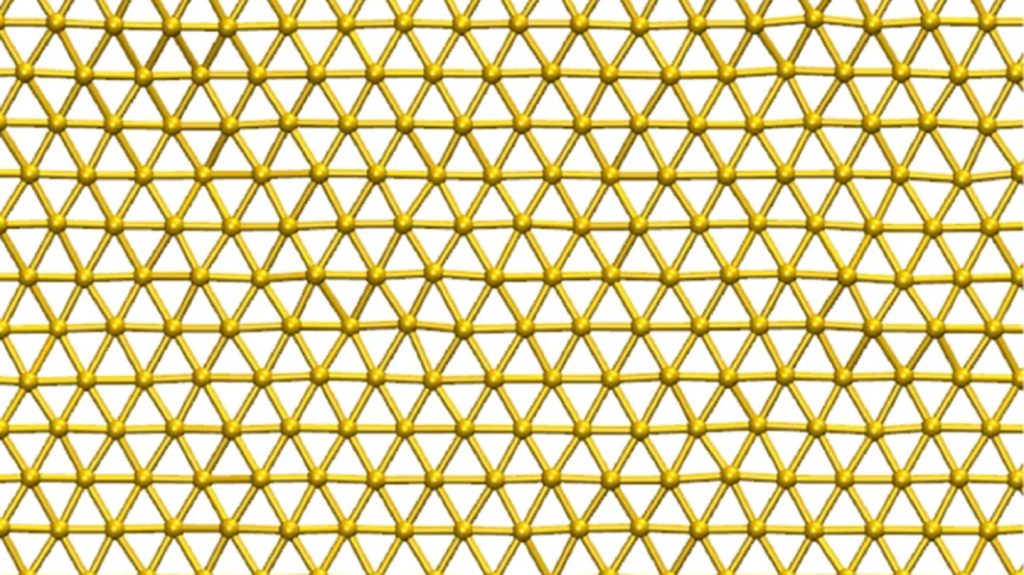Researchers have recently developed a one-atom-thick sheet of gold, known as goldene, that holds promise for potential applications in electronics and chemical reactions. This development could potentially reduce the amount of gold needed due to goldene’s 2D structure, making it a more economically viable option. Goldene could also exhibit unique properties similar to other 2D materials, making it a potential candidate for use as a catalyst in various applications.
Creating 2D sheets of metals like gold is a challenging task due to the tendency of metal atoms to clump together rather than form flat sheets. Researchers were able to create goldene by first producing a three-dimensional material, titanium gold carbide, which contained 2D sheets of gold. They then separated the goldene sheets from the surrounding material using a potassium-based solution, although the goldene sheets tended to curl up like scrolls upon isolation. To keep the sheets flat, a surfactant was added to the etching solution, allowing the sheets to float freely.
The team behind this breakthrough hopes to extend their findings to create 2D sheets of other metals like iridium and platinum using a similar etching strategy. This research opens up possibilities for exploring the properties and potential applications of these 2D metallic sheets in various fields, ranging from catalysis to electronics. By overcoming the challenge of creating 2D sheets of metals, researchers have taken a significant step towards expanding the range of materials available for use in innovative technologies.
These findings highlight the importance of fundamental research in materials science and the potential impact that novel materials like goldene can have on various industries. The unique properties of 2D metallic sheets offer exciting possibilities for creating more efficient catalysts and exploring new avenues for technological advancement. By leveraging the benefits of 2D materials, researchers aim to drive innovation and address challenges in fields such as renewable energy, healthcare, and environmental sustainability.
Further research into the properties and applications of goldene and other 2D metallic sheets will shed light on their full potential and pave the way for future developments in materials science. This work underscores the value of interdisciplinary collaboration and innovative approaches to material design, with the ultimate goal of advancing science and technology for the benefit of society. By continuing to explore the properties of goldene and similar materials, researchers aim to unlock new opportunities for improving existing processes and developing novel technologies that can address pressing global challenges.















